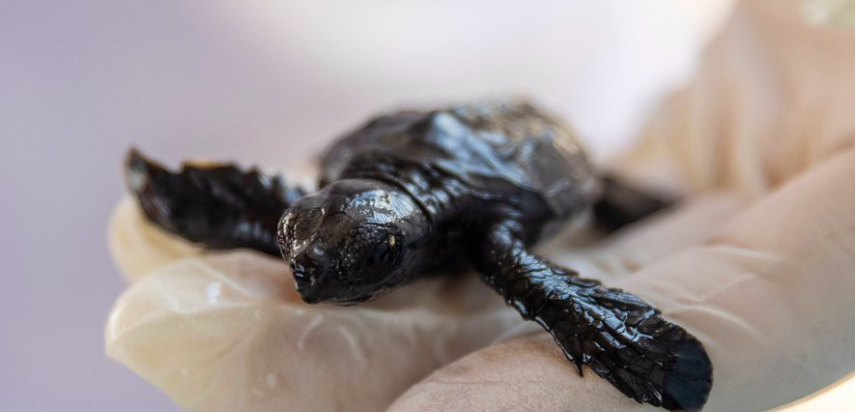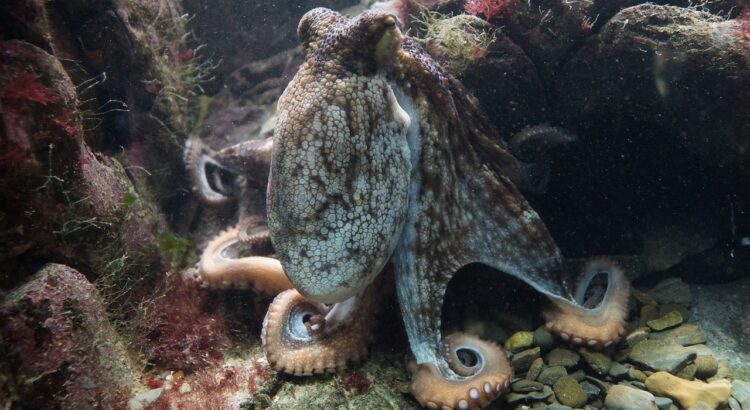Sometimes helped by volunteers to crack their shells, the baby turtles begin life with their first challenge: reaching the moonlit water of a Turkish Mediterranean beach.`

The march is uncertain, and only one youngster in a thousand will survive to adulthood, returning to the sand where it was born to lay eggs 25 years later.
The number of nests on the Turkish coast has doubled this year, reaching 700 in Manavgat (south) alone, east of Antalya: proof that, despite the threats, protection measures are bearing fruit.
A group of volunteers watches over this stretch of coastline, a 10 km tourist site nestled at the foot of the mountains, prized for its golden sands and clear waters, which is also a breeding ground for Caretta caretta, commonly known as loggerhead turtles.
These marine reptiles are on the International Union for Conservation of Nature’s (IUCN) Red List of Threatened Species.
“Our average estimate for this year is around 60,000 eggs, 30,000 of which will release baby reptiles. Only 30 of them will return here in years,” Seher Akyol, president and founder of the Dekafok marine conservation center, told AFP.
Red light and signs
Turkey’s southern coast is home to 21 official nesting zones, where most beaches are closed from 8:00 pm to 8:00 am to give the turtles free rein, but Manavgat is not one of them.
Hence the presence of Turkish and foreign student volunteers who mark the nests, surround them with sticks and pick up litter on the beach to shelter the eggs from bathers. At night, they patrol and dig up the nests to help some of the baby turtles break their shells and return to the sea.
Local authorities support these initiatives: the mayor of Manavgat has placed red-light street lamps along the coastal roads. Signs are also planted on the beach, reminding people in four languages that the law punishes any damage caused to nests with a fine of almost 390,000 Turkish lira (around 10,700 euros).
“We seek the advice of scientists and ecologists on what we should do to protect the turtles, and we apply their advice,” assures the mayor, Niyazi Nefi Kara. ”It’s up to us to learn to live in harmony with nature.”
Seher Akyol welcomes this change in mentality. “Some locals were worried that the beach would be closed. But people and Caretta caretta can live together,” she maintains.
“Since we know where they are thanks to the signs, we do our best not to encroach on their living space”, assures Songul Sert, 33, in the middle of a picnic with his family.
Climate change
Caretta caretta, which weigh between 90 and 180 kilos, can live up to 80 years. “The number of eggs and hatchlings may seem high, but the number of turtles able to return to lay eggs on land after 25 years is extremely limited. That’s why they’re endangered,” insists Prof. Mehmet Cengiz Deval of Akdeniz University in Antalya.
This marine turtle is mainly found in the subtropical and temperate regions of the Atlantic, Pacific and Indian oceans, as well as in the Mediterranean. The IUCN considers the Mediterranean Caretta caretta to be of “least concern”, but the species remains vulnerable on a global scale.
Climate change is also a threat, as the sex of newborns is determined by the temperature of the sand: cooler temperatures favor males, while warmer temperatures favor females.
“The average nest temperature is 32-33 degrees Celsius from July onwards, which means that most babies are female,” explains Prof. Deval.
“If this trend continues, within 30 to 40 years, females will be in the majority, but will no longer have any male partners to reproduce with. This is the greatest danger,” he warns.
Seher Akyol, who has dedicated her life to turtle conservation and dreams of a center to care for injured specimens, recalls “the look on their faces when they reach the water”. “You’ll think I’m crazy, but I swear they look like they’re expressing their gratitude.”
Source: Midi Libre



